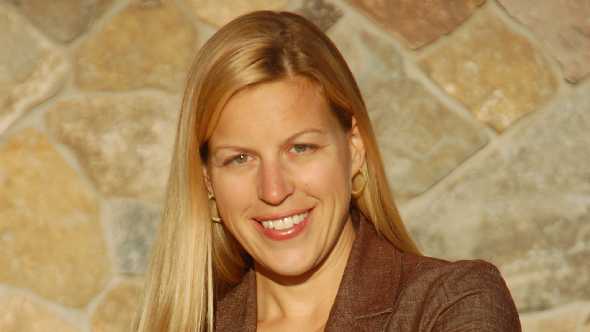Budget Wisely For Big Projects On The Farm
Erin Pirro is a farm business consultant for Farm Credit East in Enfield, CT. She leads the company’s Agricultural Benchmarks program, which is designed to enable growers and ranchers with their farm management practices.
Part of her job is to provide recommendations on how to budget for capital projects. These projects can range from a farm market, a greenhouse, a packing shed, to even a point-of-sale system for a retail operation — investments the operation will use for the foreseeable future.

Erin Pirro
Pirro says before she offers any advice, she asks the grower or rancher why he or she wants to do a project and if everyone involved is on board with the plan.
“The entire team should be on the same page regarding the focus on the project,” she says. “If everyone is not pulling in the same direction, you don’t have the best chance for success. Beyond that, especially if it is something that will involve bringing in a new product or service, is there a market for what you are trying to do in your area at the price point you want to charge?”
For a project of this magnitude, planning is crucial simply because of the money involved.
“The subject of planning is a great conversation with farmers,” she explains. “I ask farmers to think back to the last time they poured concrete. Then I ask them if they wished they had done something differently. The message is that it is very difficult to change course once you’ve started. And it isn’t just difficult; it is expensive. So if you put the time and effort into planning, it will save you money in the long run.”
The Importance Of Cash Flow
Part of the planning process involves developing a cash flow budget for your project. In fact, Pirro says its importance is the most overlooked and undervalued part of the process.
♦ 6 Tips To Help You Budget For Projects ♦
“If you think about it, we concentrate on financing the capital project itself, whether that means using money from savings or borrowing from a lender,” she explains. “Then we have to think about filling up that barn or greenhouse, and that costs money. After that, we have to think about timing, and [whether] we have enough in reserve to pay the bills if things don’t go immediately as planned and it takes an extra couple of months to get things off the ground. As we all know, when you need it to go perfectly, it is not going to.”
Focus On Efficiency
Planning the order of your projects and investments also is important. As Pirro says, most of us have limited resources — time, energy, or money. If the “right” project is done first, then the grower will get his money back faster.
For example, she says if you are making a $50,000 investment, and complete the project with the most efficient payback first, you will recoup that $50,000 sooner, allowing you to tackle the next project.
“By putting the right project first, you are going to have your money working for you instead of working hard for your money,” she adds.
If you’re looking to expand your retail market or improve your margins, any plan should include looking at the cost for each project and what the payback would be for each one. Next, determine which project is going to return the bigger bang for your buck.
“We can sit down and use a method called partial budgeting to see what the added return would be from doing the project, as well as the added costs,” Pirro says. “Sometimes you get more income than costs, and sometimes you just end up saving a lot on costs. But either way, whichever one will provide the most return is the one you want to concentrate on, which is different for every farm.”
Avoid Under-Budgeting
Pirro encourages all growers to pay attention to how much they are budgeting for a project, whether it involves money, time, or working capital. She says to ask yourself these questions: Do we have enough inventory to support this venture? Do we have to grow that inventory? Did we build growing the inventory into the schedule? Did we account for overruns or change orders?
“Most people say they are not going to change their minds, but one of my clients hugged me the last time I saw him and said, ‘I can’t thank you enough for making me include that overrun in my budget.’ If you add to the budget for overruns or change orders, etc. and you don’t need it, you have that extra money you can spend on something else,” she says. “If you don’t put it in [the budget] and you need it, then you are up a creek without a paddle.”
In the end, she says to remember that you are not in this alone. In addition to working with a farm business consultant, Pirro says you can contact the American Society of Ag Consultants, which is a consortium of people that provide financial advice to those in the ag industry. She also says local Extension personnel or other growers who have successfully completed capital improvement projects can provide good advice.
“We are all in this together,” she says. “You have to get out there and see what works.”
6 Tips To Help You Budget For Projects
Erin Pirro, a farm business consultant for Farm Credit East, offers six pointers to help you successfully budget for capital improvements on your farm.
- Keep good financial management records. “Your good records are going to earn you more money than any piece of machinery you can invest in,” she says. “The records will tell you what works and what doesn’t work; they tell you where you have opportunities. That can point you toward a more efficient financial management strategy for your business. If you have that in line, then your growth, including your new projects, will be a whole lot more profitable.”
- Do your homework. Find out what things really cost, she says. Specifics matter. You can’t just assume that because one price worked for one person that all situations are the same.
- Get a coach. Have someone available to talk to, whether it is someone you hire or a colleague. Bring that person into the conversation early on and have him or her poke holes in your ideas. By doing that, you will be better prepared for whatever is to come your way, Pirro says.
- Go back and add 20% to your original [budget] total. “Time and money wind up costing more than you initially will anticipate,” she says. “You are going to want to add the money upfront [in your budget] because it will cost a lot more if you have to change things further down the line.”
- Line up your partners early — from bankers to builders. “Everyone appreciates being kept in the loop and certainly it’s easier to plan when you know the goals,” Pirro says. “Your partners are professionals and good at what they do, so leverage their expertise in those areas to help figure out what’s best for your business.”
- Get it done! You have a good plan; now execute it.










